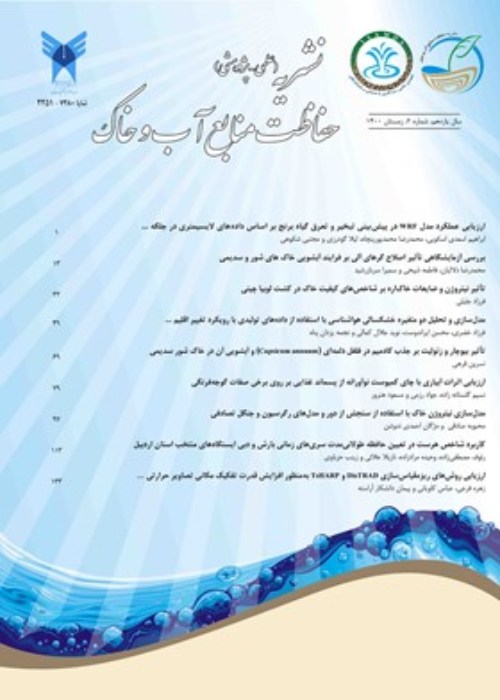An Analytical Solution of the non-Darcy Flow Governing Equation the Homotopy Analysis Method Using
The Homotopy Analysis Method (HAM) was first proposed by Liao (1992) to solve functional equations. This method is based on homotopy and provides an approximate-analytical solution for functional equations. In recent years, this method and its modifications have been effectively used to solve a wide range of linear and nonlinear problems in applied sciences to find solutions to series of various types of nonlinear equations, including algebraic equations, ordinary differential equations, partial differential equations, and differential-integral equations (Abbasbandy et al. 2006). The purpose of this research is to provide an analytical solution of time delay with acceptable accuracy for the non-linear equation of non-Darcy flow in coarse-grained media using the HAM method, which previous researchers had recommended to conduct further research in this field.
In this research, the governing equation of the non-Darcy flow was solved by the HAM method for the first time, then the water level profiles of the final equation of the HAM method obtained for the 6 inlet flow rates with different boundary conditions and in two coarse-grained porous media including rounded and sharp-edged materials. The results of the water level profile using the HAM method have been compared with the laboratory data of Sedghi Asal (2010) reported at the Stuttgart laboratory in Germany. The normal objective function (NOF) has been used to compare the HAM method results with the experimental data of Sedghi Asal (2010).
The comparison of the results of HAM method with the experimental data of Sedghi Asal (2010) has been done under upstream and downstream boundary conditions for different discharges and with a slope close to the horizon S = 0.00001. The results have shown that flow rates of q=30 lit/s, with a NOF error percentage of 0.000099828 in the porous medium of sharp corners and q = 26.25 lit/s, with a NOF error percentage of 0.000102162 in the porous medium of round corners depict better accuracy than the experimental data in higher input flow rates. This method has logical solutions in horizon slopes and the water level profiles in HAM method and experimental data have coincided or are close to each other in most of the points. However, the subject of permanent and uniform flow needs a dependent research.
The results showed that the water level profiles are close to each other in most cases. This illustrates the accuracy of the developed approach based on HAM method. However, when the difference between the upstream and downstream water levels increases, the percentage of error escalates. In other words, with the increase of the hydraulic gradient in the porous medium, the error also grows. Finally, by evaluating the results of the HAM method compared to the laboratory data, it can be concluded that this method shows better accuracy in the porous medium with sharp-cornered materials compared to round-cornered materials due to higher flow rates and higher porosity of this media.
- حق عضویت دریافتی صرف حمایت از نشریات عضو و نگهداری، تکمیل و توسعه مگیران میشود.
- پرداخت حق اشتراک و دانلود مقالات اجازه بازنشر آن در سایر رسانههای چاپی و دیجیتال را به کاربر نمیدهد.


